Before the United States of America had a Wild and Scenic Rivers Act, the state of Wisconsin had one. The Wisconsin act took effect in 1965, three years before the Feds followed suit, and one of the original rivers designated for protection—one of the rivers that inspired the act’s creation, in fact—was the Popple.
The Popple rises in a remote and largely roadless section of the Chequamegon-Nicolet National Forest, a tangle of trickles gurgling from the tamarack swamps and sedge marshes. It doesn’t truly become the Popple, though, until it crosses into Florence County in Wisconsin’s extreme northeastern corner. That’s where its tributaries marry their tannin-stained currents to spawn the swift-flowing Popple of the imagination, foaming over the falls and racing through the rapids that define its untamed character, its steep, rocky banks and the dense forests beyond providing a bulwark against civilization’s dispiriting encroachments.
They also serve to render large stretches of the Popple a pretty serious hike for anyone intent on fishing for its native brookies, although that didn’t deter Andy Cook and me from giving it a go last May. I won’t specify the exact location, but I will say that it was a long walk in chest waders from where we parked the truck. Which was a long, kidney-jarring drive from where we left the nearest paved road.
As Andy and I like to say, it’s a hard life being a sportsman.
We’d gotten on the water early, clumping down the trail with our rods in our hands and our vests jangling. The air still held the evening’s chill, and as we lost elevation the heavy dew gave way to feathery patches of frost. A grouse flushed to our left, muffled thunder in the hemlocks. Then the curtain of forest parted to reveal tendrils of mist curling up from the river, flowing deep and smooth over its bed of polished stones.
More Like This
Our heart rates jumped at that point. If you’re a trout fisherman, the sight of water with certain qualities—not the least of which is a beguiling aura of mystery—tends to affect you that way.
We weren’t disappointed. The action wasn’t fast, but every so often, as we probed the pools and pockets with a variety of small streamers, our flies’ swings were interrupted by the jolt of a trout. The line would come tight, the rod would come alive, and a minute or two later the object of our desire would lay, glistening wetly, in the cradle of our hands.
The beauty of a brook trout, like that of a wood duck, defies the logic of natural selection. There is no reason, biologically, for a creature to wear such splendid raiment: the crimson fins edged in ivory and the cyan spots like haloed stars; the intricate vermiculations and richly saturated colors; the entire effect almost holographic, as if you were looking not at a surface but into a lozenge of three-dimensional space.
“Jewel-like” is a term often applied to this fish, which goes a long way toward explaining why there is so little relationship between the size of the brook trout you catch and the satisfaction of catching them.
We returned early in the evening, hopeful that a day of warm May sunshine would trigger a hatch of, well, something. While Andy worked downstream, I bucked the current and waded up toward a broad riffle that necked down to a narrow slot—a fishy-looking spot if I ever saw one. I was tight to the alders on the inside of a bend, the water sluicing against my knees and the breeze cool on my face, when a flash of movement caught my eye.
Perhaps 70 yards upstream, a tawny form I couldn’t immediately recognize was picking its way through the patchwork of light and shadow on the far bank. I instinctively froze. A moment later, the animal emerged from a screen of brush and, standing in full profile, revealed itself.
A bobcat!
A heck of a big bobcat, too, if I’m any judge of catflesh. Other than a blurry glimpse in the headlights close to a quarter-century ago I’d never seen a bobcat in the wild; now, I had a front-row seat as one of these notoriously secretive predators went about its business. The cat continued to slip stealthily and unhurriedly along the bank, stopping now and then to stare in my direction and twitch its stubby tail. It seemed to know that something wasn’t entirely kosher, but it couldn’t figure out what it was. Or maybe it just decided that whatever it was, it didn’t pose a threat.

Eventually the bobcat drew almost directly opposite me. Only the faintest trace of the species’ characteristic rosette spotting was visible; I learned later that the further north you find them, the less prominent these markings tend to be. Then, without any sign of alarm or haste, the bobcat angled away from the river and melted into the woods. I couldn’t see it, but I knew it could see me. Watching me resume my labored push against the current, it was probably thinking something like What a putz…
There was only the feeblest semblance of a hatch that evening, and no rising fish whatsoever. But the thing about fishing a place like the Popple River is that you almost never go home empty-handed.




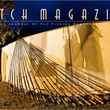
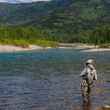





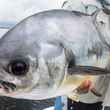




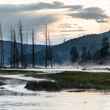




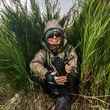
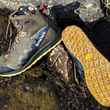



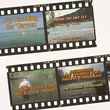
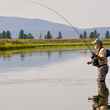


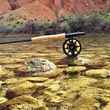
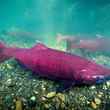
Comments